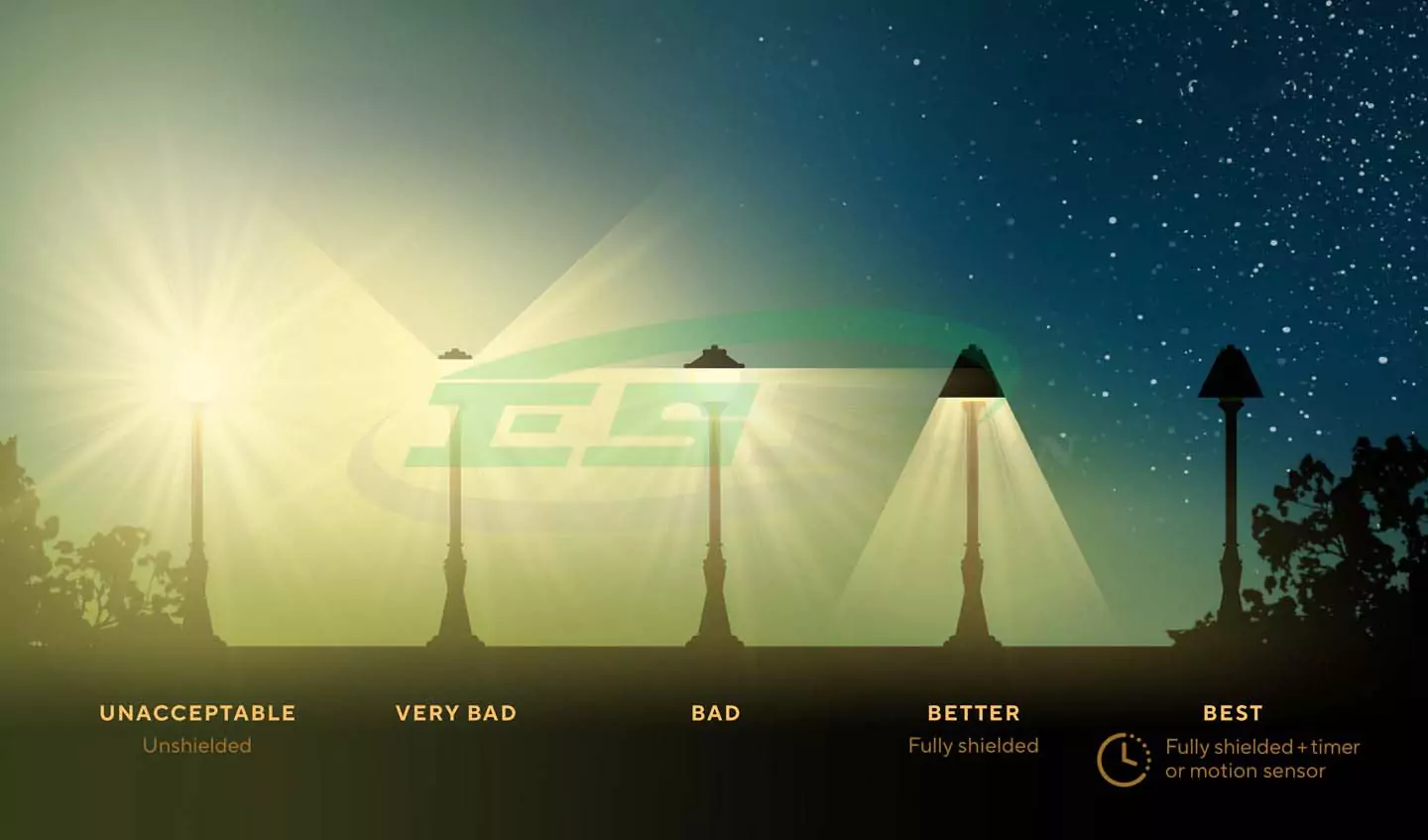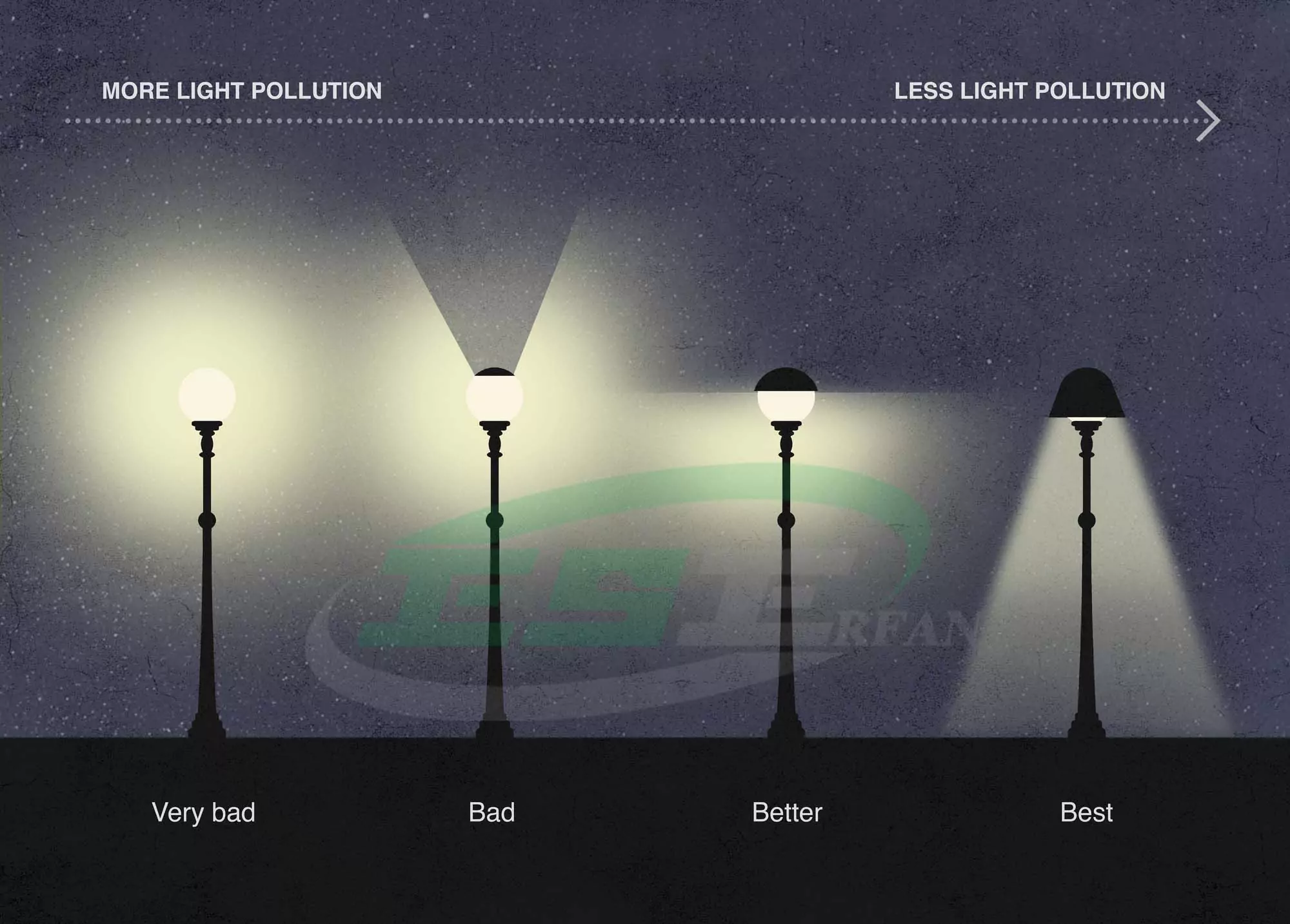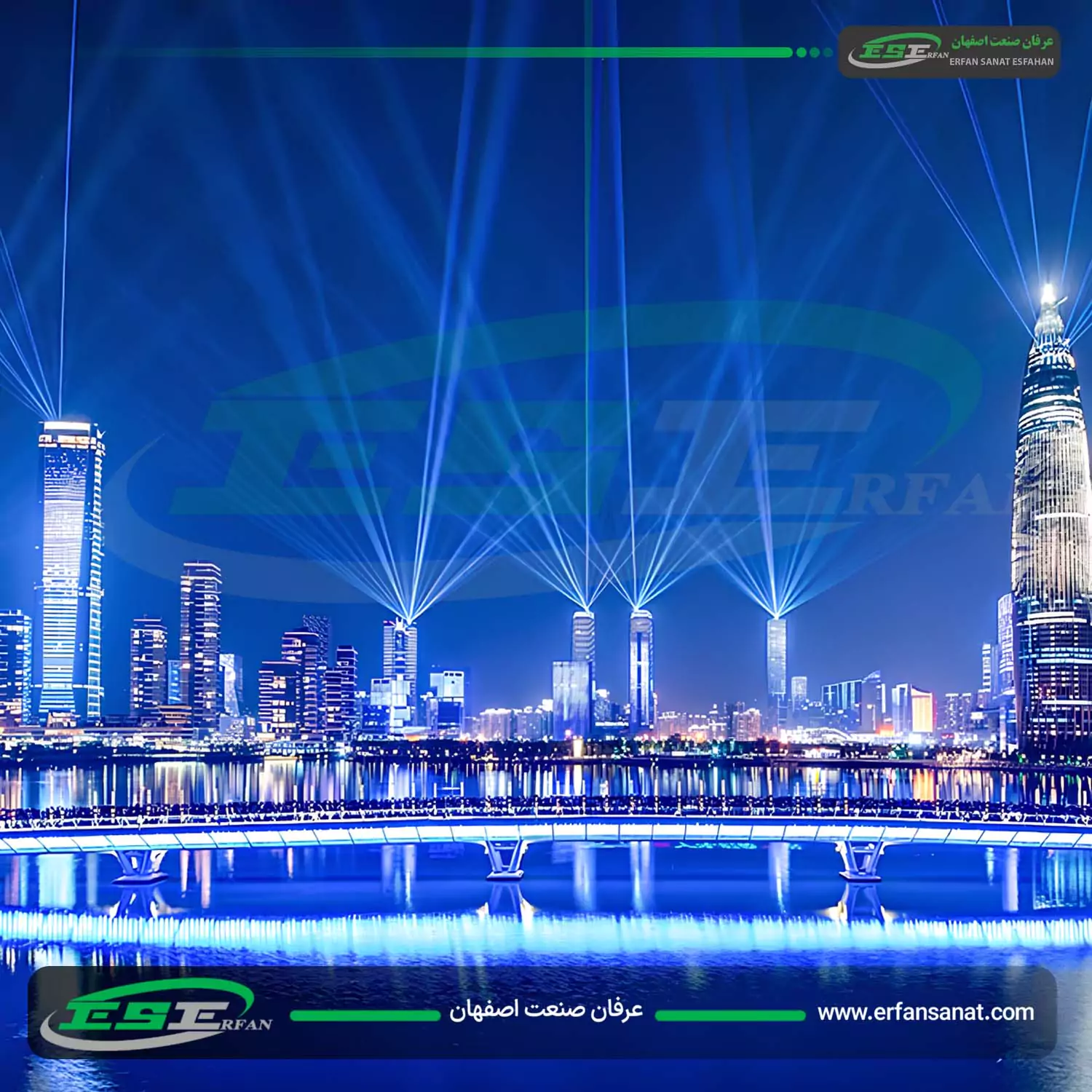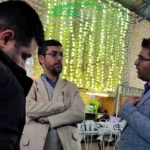Light pollution refers to artificial lights that are used at inappropriate times or in unsuitable locations, deviating from their intended standards. This results in a negative impact on the environment and the night sky. Improper lighting and light pollution disturb the natural rhythm of life and can lead to behavioral changes, as well as neurological and physiological disorders in humans.

Light Pollution Consequences
Improper lighting of urban spaces and buildings, along with the glare and eye strain caused by it, can drive potential tourists away, negatively impacting the city’s economy in the long term. Streetlight illumination, car headlights, light from spotlights used for façade or outdoor lighting, illuminated signs and billboards, stadium lights, and lighting in recreational areas are among the major causes of light pollution in cities.

Measures to Control Light Pollution:
- The amount of light emission should be minimized as much as possible.
- No public lighting should be directed into homes.
- Glare should be avoided.
- The night sky should remain naturally visible.
Controlling light during the lighting design process, including adjusting the angle of lamps and making fundamental changes to the structure of the lights and their internal components, are two widely used methods recommended by global organizations to control light pollution.





